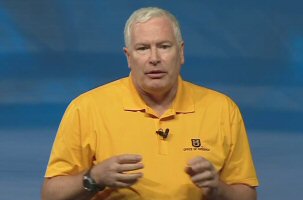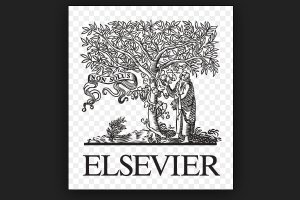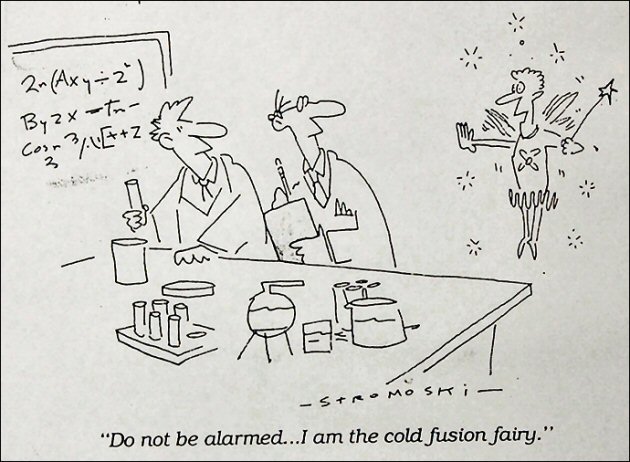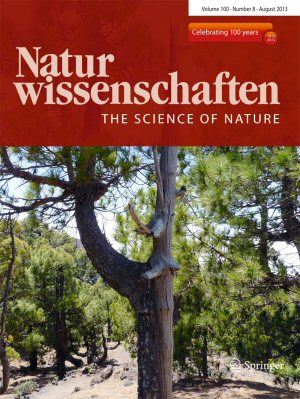
Robert Duncan
Robert Duncan, an outspoken advocate of low-energy nuclear reaction (LENR) research, is leaving his post as the vice chancellor for research at the University of Missouri, in Columbia, Missouri.
Duncan will become the vice president for research at Texas Tech University in Lubbock, Texas, on Jan. 1, 2014, according to press releases from both universities.
He will move from a university with significant nuclear research programs to a university with no nuclear research programs. Texas Tech has no nuclear physics or nuclear engineering department.
At the University of Missouri, Duncan is responsible for the management of the university’s major research facilities, which include the Missouri University Research Reactor, the most powerful university research reactor in the United States.
The shift for Duncan also includes moving down from a tier 1 university to a tier 2 university. The ranking is based on a gauge developed by the Carnegie Classification of Institutions, a “gold standard” used to compare the quality of universities.
Duncan did not return phone messages from New Energy Times.
On Oct. 15, New Energy Times spoke with Mark Prelas, a professor of nuclear engineering at Missouri who said he will miss Duncan.
“Not many universities or research folks favor cold fusion,” Prelas said. “This was certainly a breath of fresh air in terms of Rob promoting this research.”
Prelas said he appreciated the fact that Duncan encouraged people both outside and inside the university to take a look at the controversial research. Prelas’ nuclear work, which he considers inertial confinement fusion rather than LENRs, uses a thermal shock method.
Duncan began his job at the University of Missouri on Sept. 1, 2008. He is not a LENR researcher and had no involvement in the field until the Fall of 2008, when he was contacted by CBS’s “60 Minutes” producers Denise Cetta and Sam Hornblower. He has experience in low-temperature physics, and CBS asked him to give an outsider’s opinion on LENR research for its program “Cold Fusion Is Hot Again.”
In the program, Duncan did not distinguish between the discredited idea of “cold fusion” versus LENRs, a set of primarily weak-interaction and neutron-capture processes, a distinction that was well-known by that time. (See “LENR is Not “Cold Fusion” – A Crucial Distinction.”) There is no experimental evidence of LENRs as a nuclear fusion process, and in fact the preponderance of evidence contradicts the idea of “cold fusion.”
The CBS show featured the work of Energetics Technologies, a company apparently no longer in business. The company claimed in a 2009 press release “historic results achieving excess heat of 2,500 percent.” The company did not publicly disclose that it observed that result only one time, in 2004, and had never been able to repeat it.
When the CBS show was broadcast in April 2009, Duncan instantly became a hero for “cold fusion” fans, though the show had little other impact. Duncan defended “cold fusion” based on the principle of following the scientific method. He encouraged viewers to never let others do their thinking for them.
Later that year, at a science conference in Rome, Duncan speculated that muon-catalyzed fusion might explain LENRs. Muon-catalyzed fusion, however, cannot explain the magnitude of excess heat observed in LENRs. Duncan stands alone in making such a suggestion.
Soon after his “60 Minutes” appearance, Duncan and his wife, Annette Sobel, took paid consulting appointments with Star Scientific Ltd. of Australia, a company promoting muon-catalyzed fusion as a feasible novel energy source, according to a former investor in the company. The company used Duncan’s endorsement to convince investors to help fund the company.
A Dec. 3, 2011, article in the Columbia (Missouri) Daily Tribune, reported that Duncan was trying to get the federal government to fund “cold fusion” research. In the article, Duncan also promoted the claims of Andrea Rossi, an Italian businessman who convinced countless people worldwide that he had invented and scientifically proven a commercially viable “cold fusion” device.
On Dec. 9, the Tribune published my letter criticizing Duncan for publicly supporting Rossi despite the fact that Rossi had failed to follow the scientific method and appeared to have nothing but smoke and mirrors. I criticized Duncan’s endorsement of Rossi, a convicted fraud, as a tremendous disservice to both Duncan and the LENR field.
Undeterred, Duncan announced, as reported in a Feb. 12, 2012, article in the Tribune, that he intended to purchase two of Andrea Rossi’s Energy Catalyzers.
Duncan is the only U.S. academic administrator in recent history to promote “cold fusion.” Not only did he lend his and his university’s credibility to “cold fusion,” but he also made extensive resources at the University of Missouri available for the research and for related colloquia.
During this time, Duncan attempted to change the name LENR to Anomalous Heat Effect, despite the fact that LENRs are far more than heat effects. Duncan consistently said that there was no feasible theoretical explanation for LENRs when he spoke at science meetings and with the press, and he consistently failed to distinguish between “cold fusion” and LENRs.
In January 2012, he negotiated a $5.5 million gift to the University of Missouri to create the Sidney Kimmel Institute for Nuclear Renaissance (SKINR), based on his opinion that no credible explanation for LENRs was available, as he wrote in his curriculum vitae.
“SKINR’s mission is to determine experimentally the mechanism that is responsible for the Anomalous Heat Effect (AHE) that has been reported in certain metals while heavily loaded with various hydrogen isotopes,” Duncan wrote.
Duncan consistently failed to acknowledge the scientifically credible explanations of LENRs as weak interactions, which is best explained by the Widom-Larsen theory. The theory has received unprecedented recognition from the American Nuclear Society, Boeing Aerospace, CERN (the European Centre for Nuclear Research), the Defense Threat Reduction Agency, NASA and the Navy’s Space and Naval Warfare Systems Center.
In August 2012, Duncan was a featured speaker at a trade show hosted by National Instruments in Austin, Texas. In his talk, he explicitly avoided the Widom-Larsen theory and displayed the names of many of the other scientists who have proposed LENR theories. Duncan showed a preference for the “cold fusion” ideas of Yeong Kim, a professor of physics at Purdue University.
In the fall of 2012, Duncan announced that the 18th International Conference on Cold Fusion would take place at the University of Missouri in July 2013. Duncan had initially listed Purdue University as a sponsoring partner of the conference on the University of Missouri Web site and Kim as the co-chair of the conference.
In March 2013, Nicholas Giordano, the head of the Purdue University Physics Department, told New Energy Times that Purdue was not a sponsoring partner. Within days, Duncan de-listed Purdue as a sponsoring partner on the University of Missouri Web site and instead listed National Instruments Corp. and the Italian National Agency for New Technologies, Energy and the Environment. At the same time, Duncan changed the conference name to the 18th International Conference on Condensed Matter Nuclear Science.
Duncan will replace Michael San Francisco, the interim vice chancellor for research at Texas Tech. The former vice president for research at Texas Tech, Taylor Eighmy, left in August 2012 and became the vice chancellor for research at the University of Tennessee.
In a press release, Texas Tech University President M. Duane Nellis explained Duncan’s hiring.
“Dr. Duncan’s extensive backgrounds in teaching, research and as vice chancellor for research at the University of Missouri combine to provide a strong vision and effective leadership,” Nellis said.
Related News Stories:
ICCF-18 “Cold Fusion” Conference Begins Next Week
NRL Will Host Colloquium on “Cold Fusion”
Duncan’s Scientific Method Excludes Widom-Larsen Theory
Duncan’s Promotion of Rossi: A Tremendous Disservice
Vice Chancellor Duncan to Purchase Two Energy Catalyzers
2009 CBS-TV Program Wrongly Reported DARPA LENR Endorsement
______________________________________________________________
Questions? Comments? Submit a Letter to the Editor.






